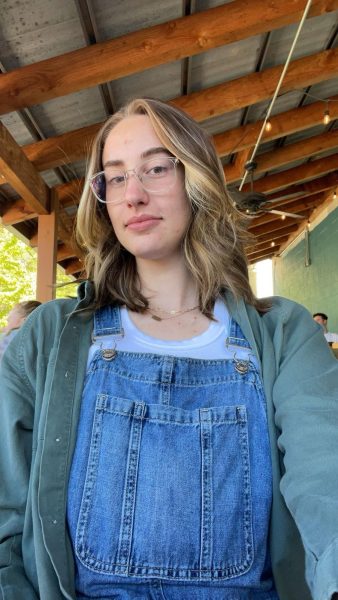“Outer Wilds” is a game that is best played blind, with little to no prior knowledge. For the purposes of this review, however, there will be slight spoilers for the premise of the game, setups to some of the game’s mysteries and descriptions of certain visuals and soundtracks. If a space exploration mystery game sounds at all appealing, please play “Outer Wilds” prior to reading this review.
Mobius Digital’s 2019 game “Outer Wilds” does something that no other game has ever done before or since its release: it depicts the birth and death of the universe as well as the rise and fall of civilizations, all within the span of 22 minutes.
What starts as a lighthearted journey of learning to fly a spaceship through a solar system quickly turns into a profound sense of cosmic dread, as no matter what actions the player takes, their journey will always end in the same way: death. Whether it’s due to a poorly maneuvered jump, a spaceship explosion, being eaten by a monster that’s more than triple the size of the player’s spaceship, or watching the sun at the center of the game’s solar system become a supernova that annihilates anything and everything the player has and has not explored.
But death, while inevitable in the world of “Outer Wilds,” is not the end. Upon the player’s character taking their final breaths, they are whisked back in time to 22 minutes prior to their demise, something that will happen every time the player dies, for as long as the player explores the cosmos. Armed with only a translator, wavelength reader, scout gun and spaceship, the player is tasked with finding a way to not only save their solar system, cheating death in the process, but also to prevent the collapse of the entire universe.
“Outer Wilds” is different from its brethren in the space exploration genre. While many have some sort of alien threat or galaxian politics, “Outer Wilds” has six planets for the player to explore at their own pace as they follow the trail of a long-dead civilization that seems to have the answers to the cosmic dilemma the player finds themselves in.
No planet within “Outer Wilds” is alike, as all develop vastly different climates and terrain while they orbit around the sun in real time. From the beginning of the 22-minute time loop to the end, there are no loading screens, no tutorials or guides telling the player where to go or what to do, just an open solar system waiting to be explored. The only loading screens present in the game are upon booting it up and upon resetting the time loop. Aside from that, everything in the game is completely seamless from start to finish.
Every mystery that “Outer Wilds” presents to the player will take them on an interplanetary adventure in hopes of finding discoveries that the real world would struggle to comprehend. Why is there a giant moon in the sky that disappears when the player isn’t looking at it? Who are the Nomai and how did their civilization cease to exist? Why do some parts of the solar system seem to defy all laws of time and space? And why is the player stuck inside a 22-minute time loop?
All of those questions and more are interconnected within a larger mystery, which the player slowly pieces together as they soar from planet to planet, discovering ruined city after ruined city, and even encountering some fellow travelers along the way.
While the player explores the vast emptiness of the doomed solar system they find themselves in, they’ll be accompanied by “Outer Wilds” stunning visuals and ethereal soundtrack.
The relieving comradery of finding a fellow space traveler while exploring long abandoned planets poignantly complements the somberly existential dread that comes with hearing the track “End Times” as the player watches the star at the center of the solar system explode in a beautiful, engulfing flash of blue starlight.
The closest thing to a problem “Outer Wilds” has is that the learning curve for understanding how to fly the spaceship from planet to planet is a little steep for a beginning player, especially with how the flight tutorial makes it seem much harder than it actually is. The tutorial has the player control a ship model from a third person perspective, which has confusing controls. When flying the actual spaceship, the player controls it from a first person perspective, which is much easier to handle.
In the end, “Outer Wilds” is a testament to how far independent games have come over the past decade. With a solar-system-wide playground for the player to explore alongside breathtaking visuals and incredible music, “Outer Wilds” is a game that anyone who appreciates games, space, exploration or mysteries should check out. Taking anywhere from 10 to 20 hours to complete, it is a fun yet transcendent experience perfect for a weekend escape. “Outer Wilds” is easily a 10/10 game, available on Nintendo Switch, Playstation 4 and 5, Xbox One & Series X/S, and PC.


